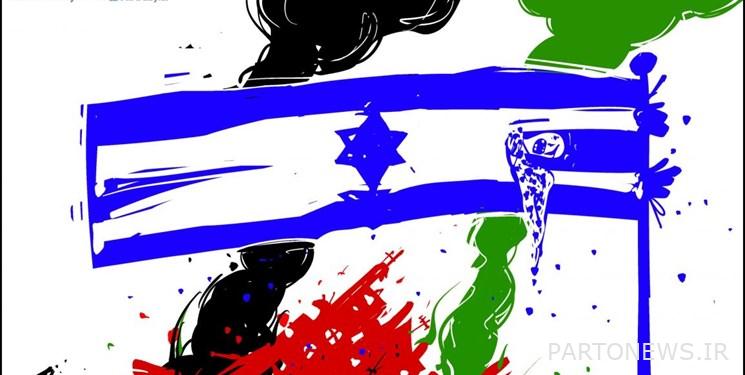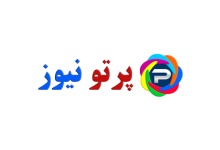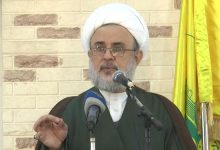Investigating the Unbridled Structural Crisis in the Zionist Movement

According to Fars News Agency’s International Group, the media of the Zionist regime today (Wednesday, June 29) announced the expectations in Tel Aviv for the official announcement of the dissolution of the Knesset and the current Prime Minister “Yair Lapid” until the early elections. After the collapse of the right-wing coalition government of Naftali Bennett in Israel and its decision to dissolve the Knesset and go to the fifth election in the last three and a half years, it has become clear to everyone that the Zionist project is nearing its decline.
Zionism Project and Structural Crisis
Newspaper The new Arab “These days, like the colonial settlement projects, Zionism is experiencing a structural crisis and a lasting conflict with the Palestinian people who are the victims of this project,” he wrote in a memo entitled “On the Crisis of Zionism.” Zionism is a movement based on conflict at the same time as a permanent crisis, but it is the crisis of the victors who have accomplished most of their project and, despite becoming a major military and economic power in the region, are facing crucial challenges at this stage.
The author believes that there is an inverse relationship between the escalation of the crisis in the Zionist regime and the escalation of the crisis in Palestine. That is also true. This is true to varying degrees of the Arab situation and, to some extent, the international situation. But whatever it is, there is a fact, and that is that the situation in Palestine, no matter how bad, the occupier will not succeed in overcoming the Palestinian cause. Rather, it is the source of internal and existential crises in Israel. The environment in which the Israeli elite is reproduced and transformed will affect the whole Zionist project in the future. To this, the internal rifts that occur in the Zionist currents; Is also added.
“The Israeli scene shows the acceleration of the process of losing self-control,” the memo continued. It is not true to think that Israel is losing its sovereignty, but it is true that it is openly using its sovereignty to protect its Jewish citizens and to intimidate Palestinian Arab citizens and the Palestinian people as a whole. As in this path, it uses the principles and systems that characterize democratic systems and, as they define themselves, are characterized by strong legislative, executive, and judicial systems.
Manifestations of the crisis in the Zionist regime
The author went on to point out two major manifestations of the Israeli crisis and wrote: “The first is directly related to the issue of Palestine and the inability of the Zionist project to get out of it. Another manifestation that is related in certain respects is the collapse of restraint systems and the balancing of the role of the authorities of the various powers, and the slippage towards being on the “edge of the abyss,” as Talia Sassoon points out in her report on urban development. In it, he raises the profound question: “Is the victory in the settlement project the end of Israeli democracy and the problem of the role of the Supreme Court in the labyrinth of the Israeli-Palestinian conflict?” “While Hezekiah Douror believes that there is a crisis in the culture of leadership in Israel, as the title of one of his books says, ‘We Need a Leader,’ he has addressed this issue in several articles.”
The author goes on to write that the evidence of this is the statements of the military and security commanders after the end of their official mission. One of the manifestations of these statements is what they say about the nature of the crisis within the Zionist regime and state that the real and even existential danger “does not come from Iran” or “foreign enemy” but is an internal danger that comes from two sources. One of them is the issue of Palestine and its demographic and security consequences for the government is the Zionist project in Palestine, but another source of concern is the possibility of the collapse of Israel’s internal immunity and the conflict between the Zionist currents over fundamental issues and criteria agreed upon by the Zionists. The latest remarks in this regard go back to “Tamir Pardo”, the former head of Mossad.
The unbridled crisis of Zionism and the negligence of the Palestinians in investing in this crisis
There is almost no strategy that the Zionist movement has not used to purge and erase the Palestinian issue. But it has never been successful in this direction and it has not been able to resolve it, but there is no Palestinian or Arab side that can take advantage of this crisis of Zionism and turn it into a strategic Palestinian-Arab opportunity. For example, the famous “Nation-State” law passed in 2018; If we look at the Zionists’ insistence on it and the extent to which Israel needs it, it becomes clear that it does not indicate the strengthening of the Zionist project, nor the strength of Israel, nor the “immunity of nationalism,” but rather a state of weakness in Palestine. Giving the truth of this government and its legitimacy was not exploited. At the level of domestic politics, on the other hand, the law was meant to marginalize liberal forces, while at the same time reinforcing rampant racism. Of course, not because of the passage of this law, but because of the passage of this law, it was a reflection of the current situation in the Zionist society.
This memorandum refers to the bloody and dangerous chaos in 2021, especially in the Arab lands, which showed that the ruling crisis has reached its peak. The author goes on to emphasize that another aspect of this crisis is the violent and unresolved conflict between the “deep state” and the “Zionist-religious resettlement” project and the mentality it has created in all aspects of Israeli life. Also, the struggle between liberal Zionism and the post-Zionist currents is ready to destroy any liberal and democratic structure to strengthen its ideology and impose it as the ideology of the occupying institution. Therefore, the current elite coup can be considered as the second coup after the 1977 coup. Meanwhile, the religious movement of violent settlers considers itself the vanguard of the Zionist movement and the government as a tool to serve its goals, approaches and ideology.
In another part of this memo, after referring to the differences and conflicts between the Haridim and Zionist-religious currents, the author writes: Looking at the first year of experience of the Bennett-Lapid government, it is clear that the parties inside and outside the coalition, despite differences in approaches They were able to work together, so putting Palestine off the agenda is a prerequisite for strengthening coalitions. Accordingly, the far right was willing to accept the Arab Party (United List – Islamic Movement of the South) in its coalition, whether led by Likud or the Yemina Party.
Accordingly, this “way out” of the ruling coalition has plunged the Zionist right into a deep crisis, intense conflict and hostile alignments. Fortunately for this cabinet, there is no real external alternative to it. While Likud, as Israel’s center-right movement, is allied with the Haridi parties, it has tensions and conflicts with the Zionist-religious movement that may turn into a conflict and then disappear. However, it is difficult to predict now.
The author concludes that the crisis of Zionism is structural and beyond a partisan political crisis, and it seems that this crisis will deepen because there are no signs of overcoming it. However, it is a crisis related to the issue of Palestine, the nature of Israel and the internal Zionist rifts, and the Palestinian people are an influential factor in deepening this crisis.
End of message / m
You can edit this post
Suggest this for the front page

